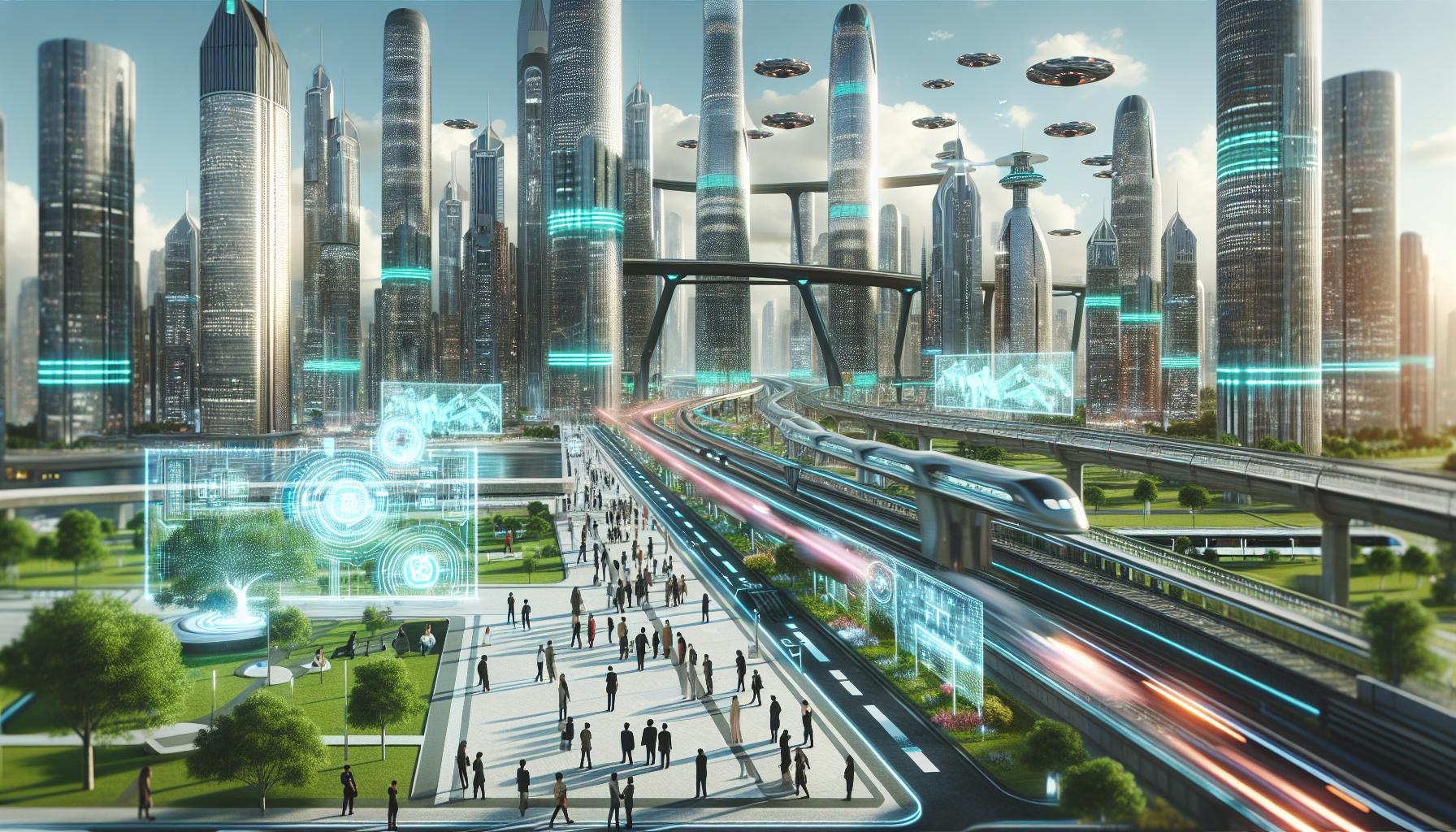Science fiction opens doorways to infinite possibilities where imagination knows no bounds. From time-traveling adventures to encounters with alien civilizations writers have captivated readers with mind-bending narratives that challenge our understanding of reality.
Creating compelling sci-fi stories isn’t just about inventing cool gadgets or describing distant planets. It’s about weaving together scientific concepts human emotions and thought-provoking scenarios that keep readers on the edge of their seats. Whether it’s Ray Bradbury’s haunting tales or Arthur C. Clarke’s visionary works successful sci-fi stories share common elements that make them unforgettable.
Let’s explore some stellar examples of science fiction writing that’ll inspire aspiring authors to craft their own universe-spanning narratives. These examples showcase the perfect blend of scientific plausibility character development and imaginative world-building that defines exceptional sci-fi storytelling.
What Makes a Great Science Fiction Story
Core scientific concepts anchor exceptional science fiction stories through plausible technological advancements or theoretical possibilities. Strong character development intertwines with innovative scientific elements to create relatable emotional connections.
A solid world-building foundation includes:
- Established rules governing the fictional universe
- Consistent internal logic for technological systems
- Clear societal structures shaped by scientific advances
- Detailed environmental descriptions that ground the setting
Compelling narrative elements incorporate:
- Scientific principles woven naturally into the plot
- Complex moral dilemmas sparked by technological advancement
- Character growth driven by scientific discoveries
- Tension between human nature and technological progress
The blend of science and storytelling requires:
- Accurate scientific research to maintain credibility
- Technical concepts explained through natural dialogue
- Balanced pacing between exposition and action
- Focused exploration of specific scientific themes
| Key Component | Purpose | Impact |
|---|---|---|
| Scientific Accuracy | Builds credibility | Maintains reader trust |
| Character Development | Creates emotional investment | Drives plot forward |
| World-Building | Establishes context | Immerses readers |
| Thematic Depth | Explores consequences | Provokes thought |
Original ideas emerge through:
- Unique perspectives on established scientific concepts
- Fresh interpretations of future technological impacts
- Innovative solutions to theoretical problems
- Creative extrapolations of current scientific trends
These elements combine to create engaging narratives that challenge readers while maintaining scientific plausibility. Each component supports the others to form a cohesive story that resonates with audiences.
Key Elements of Science Fiction Writing

Science fiction writing combines scientific concepts with imaginative storytelling elements. Creating compelling sci-fi narratives requires attention to specific components that distinguish the genre from other forms of fiction.
World Building and Technology
Science fiction worlds integrate advanced technology seamlessly into their fictional environments. The technology presented follows consistent rules that align with scientific principles while pushing the boundaries of possibility. Detailed descriptions establish the setting’s physical characteristics including atmospheric conditions climate patterns social structures transportation systems. Writers create comprehensive technological frameworks that explain how devices function their limitations their impact on society. Examples include:
- Energy systems (plasma cores quantum reactors antimatter engines)
- Transportation methods (faster-than-light travel teleportation portals)
- Communication devices (neural implants holographic interfaces telepathic networks)
- Environmental controls (terraforming equipment biodomes weather manipulation)
Character Development in Sci-Fi
Characters in science fiction stories evolve through their interactions with advanced technology alien species scientific discoveries. Their growth stems from confronting ethical dilemmas solving complex technical problems adapting to transformed environments. Strong sci-fi characters demonstrate:
- Technical expertise (engineers scientists explorers inventors)
- Psychological depth (internal conflicts moral questions identity struggles)
- Cultural adaptability (alien customs future societies technological integration)
- Problem-solving skills (scientific methods innovative thinking technological mastery)
These characters face unique challenges that test both their technical capabilities emotional resilience when encountering unprecedented situations altered realities experimental technologies.
Popular Science Fiction Story Structures
Science fiction stories follow distinct narrative patterns that captivate readers through familiar yet innovative storytelling frameworks. These structures provide a foundation for exploring complex scientific concepts while maintaining engaging character development.
The Hero’s Journey in Space
Space-based hero’s journey narratives transform traditional storytelling elements into cosmic adventures. The protagonist receives a call to adventure through alien contact, scientific discovery or technological breakthroughs. Key story beats include crossing technological thresholds, encountering mentor figures like seasoned astronauts or artificial intelligences, facing trials in hostile alien environments. The hero undergoes personal transformation through exposure to advanced civilizations, quantum phenomena or time dilation effects. Notable examples include Andy Weir’s “The Martian” where Mark Watney faces survival challenges on Mars or Arthur C. Clarke’s “2001: A Space Odyssey” featuring Dave Bowman’s evolutionary transformation.
First Contact Narratives
First contact stories explore humanity’s initial encounters with alien civilizations or mysterious cosmic phenomena. These narratives examine communication barriers, cultural misunderstandings and technological disparities between species. Ted Chiang’s “Story of Your Life” focuses on a linguist decoding alien language while revealing profound insights about time perception. Carl Sagan’s “Contact” details humanity’s response to receiving extraterrestrial signals through radio astronomy. Common elements include scientific protocols for alien interaction, diplomatic tensions between nations and philosophical debates about humanity’s cosmic role. Characters navigate complex moral choices while bridging gaps between human and alien understanding.
Time Travel Story Examples
Time travel narratives explore temporal paradoxes through compelling storylines that challenge conventional perceptions of cause and effect. These stories examine the consequences of altering historical events while navigating complex philosophical questions about determinism and free will.
Parallel Universe Plots
Michael Crichton’s “Timeline” demonstrates parallel universe complexity by sending archaeologists to a medieval timeline through quantum technology. H.G. Wells’ “The Time Machine” established foundational time travel concepts through a Victorian-era inventor’s journey to distant futures. In Blake Crouch’s “Dark Matter” multiple timelines intersect as the protagonist navigates quantum superposition scenarios. These narratives incorporate:
- Butterfly effects causing cascading timeline changes
- Alternate history scenarios exploring different decision outcomes
- Quantum mechanics theories supporting multiple reality branches
- Character encounters with parallel versions of themselves
- Timeline convergence points creating narrative tension
Future Timeline Stories
Robert Heinlein’s “By His Bootstraps” explores closed-loop time travel where future events cause past occurrences. Stephen King’s “11/22/63” examines historical intervention through a time portal to prevent JFK’s assassination. The narrative elements include:
- Fixed time points acting as narrative anchors
- Temporal anomalies affecting character development
- Future technology impacting historical events
- Causality loops creating complex plot structures
- Time stream preservation conflicts
- Multiple timeline iterations revealing new story layers
Each story focuses on temporal mechanics while maintaining character-driven narratives that explore human nature across different time periods.
Alien Invasion Story Examples
Alien invasion narratives explore extraterrestrial encounters through two distinct formats: hostile invasions and peaceful contact scenarios. These stories examine humanity’s response to superior technological civilizations while incorporating scientific elements and societal implications.
War of the Worlds Format
H.G. Wells’ “War of the Worlds” established the template for hostile alien invasion stories. Modern examples like “Independence Day” and “Ender’s Game” feature advanced civilizations targeting Earth’s resources or seeking planetary colonization. Key story elements include:
- Military response protocols against superior alien technology
- Global cooperation between nations facing extinction
- Scientific solutions to overcome alien defenses
- Biological factors affecting invasion outcomes
- Strategic warfare incorporating Earth’s environmental advantages
Common plot points integrate:
- Initial devastating attacks on major population centers
- Discovery of alien weaknesses through scientific research
- Implementation of unconventional defense strategies
- Documentation of invasion impact on society structures
Peaceful Contact Format
“Arrival” and “Close Encounters of the Third Kind” demonstrate peaceful first contact scenarios. These narratives focus on communication challenges linguistic experts face when decoding alien languages. Essential elements include:
- Scientific protocols for establishing safe communication
- Cultural exchange attempts between species
- Mathematical principles as universal language
- Technological gifts or knowledge sharing
- Diplomatic negotiations between human governments
- Initial misunderstandings leading to potential conflicts
- Breakthrough moments in cross-species communication
- Scientific validation of alien technologies
- Global political responses to diplomatic contact
Space Opera Writing Tips
Space opera combines grand-scale interstellar adventures with complex character dynamics across vast cosmic settings. These narratives blend military conflict, political intrigue, and technological advancement to create epic stories spanning multiple star systems.
Military Science Fiction Elements
Space opera military elements incorporate advanced weaponry specifications alongside detailed battle tactics. Combat scenes feature precise descriptions of spacecraft maneuvers, shield configurations, and weapon capabilities. Naval-inspired command structures establish clear hierarchies among crew members, from bridge officers to engineering teams. Space battles emphasize strategic positioning, energy management, and three-dimensional combat physics. Military protocols shape character interactions through rank-based relationships, combat procedures, and emergency response scenarios. Authors like David Weber integrate realistic military logistics including supply chains, maintenance cycles, and personnel management.
Interstellar Politics and Conflict
Political frameworks in space operas span multiple planetary systems connected through trade routes, diplomatic alliances, and shared resources. Galactic governments operate through complex bureaucracies, competing factions, and overlapping jurisdictions. Trade federations control economic zones while resistance movements challenge established power structures. Cultural conflicts arise from differing technological advancement levels between civilizations. Resource scarcity drives territorial disputes over habitable planets, mineral-rich asteroids, and strategic space lanes. Diplomatic negotiations occur through space-based embassies, neural networks, and quantum communication channels. Frank Herbert’s “Dune” demonstrates intricate political maneuvering through houses competing for control of vital resources.
Conclusion
Creating compelling science fiction stories requires a delicate balance of scientific accuracy imaginative world-building and engaging character development. The genre’s endless possibilities allow writers to explore complex themes through diverse narrative structures from time travel paradoxes to alien encounters.
Whether crafting a space opera or a first contact narrative success lies in maintaining scientific plausibility while weaving emotionally resonant tales. Writers who master these elements can transport readers to new worlds challenge their perspectives and leave lasting impressions through thought-provoking storytelling.
The future of science fiction continues to evolve as new scientific discoveries and technological advancements inspire fresh narratives. Armed with these foundational principles and examples writers can confidently craft their own unique contributions to this ever-expanding genre.
